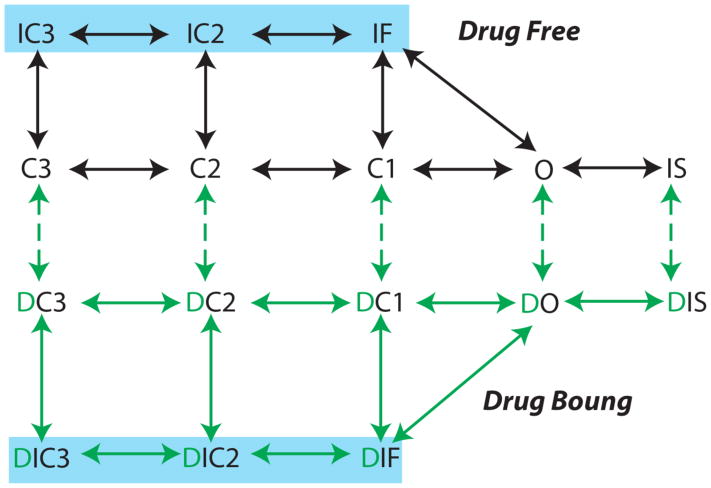Figure 3.
An example for a Markov model representation of drug free and drug bound states for a model of the voltage gated Na channel (drug bound states are in green). In construction of a Markov based kinetic model representation of drug channel interactions, each drug free state in the model typically has a corresponding drug associated state. This assumption derives from the modulated receptor hypothesis, where any channel state can be drug-bound, although drugs exhibit distinct affinities for discrete states 49. Measured affinities and drug diffusion rates from experiments are used to constrain the drug “on” and “off” rates in the model. Measured diffusion rates (D) are used to inform drug on rates “kon” = [drug] * D and affinities (Kd) to discrete conformations that determine drug off rates “koff” = Kd * D. Model rate constants are then further constrained by optimization to data and microscopic reversibility 50.

